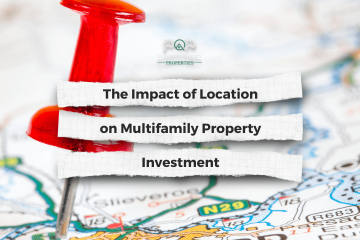Salvo after salvo, the money shots keep coming. Retail investors. Office investors. Sovereign wealth. Family offices. Debt providers. Equity. Pension funds, insurance companies, and their institutional investor ilk. Everyone wants in on the U.S. apartment sector.
“There is an overabundance of money chasing multifamily and still an undersupply of housing in this country,” says Noam Franklin, the managing director for Berkadia’s JV Equity & Structured Capital Group in New York City. “In addition to traditional institutional investors, there are groups raising capital in-house, there is a ton of private equity, there’s 1031 exchange, and there’s high-net-worth money pulling out of the stock market and pouring into apartments. It is a constant bombardment of capital.”
And why not? 2021 was a record-breaking year for multifamily. North of $180 billion in assets traded hands (including billion-dollar portfolios) as investors sought to gain a foothold or fortify market positions while owners looked to harvest value from continued cap rate compression. Rent growth hit historic, double-digit increases in virtually every major MSA, and by September developers were poised to finish the year bringing 520,000 new apartment units out of the ground.
All of this against a macroeconomic backdrop that included material and payroll cost inflation, supply chain deficiencies, the lingering impact of a global pandemic, and tough competition from for-sale markets as mortgage interest rates likewise hit historic numbers and home buyers gobbled up whatever inventory they could.
Brad Dillman is the chief economist and head of research at Atlanta-based Cortland, an owner and operator of 65,000 units across 200-plus properties. Previously a quantitative analyst for CoStar and director of economic research for PulteGroup, Dillman has led an effort to program a proprietary forecasting system at Cortland that scores multifamily submarkets on fundamentals and likely future performance.
“During lockdown we were able to put in some serious hours to ramp up this capability, incorporating dozens of inputs, including employment figures, interest rates, forward curves, and some interpolation to develop forecast models that we’re updating every quarter,” Dillman says. “Almost 90% of our active markets experienced their strongest historical rent growth in 2021. Our forecast models correctly predicted the surge, but they did not predict the unprecedented magnitude of it.”
Indeed, supercharged rent fundamentals and insatiable investor appetite for multifamily assets led to some of the biggest apartment deals ever last year, including the September disposition of a 23-property portfolio by Bell Partners for $1.8 billion to an undisclosed buyer. Far from an asset dump, the deal by the Greensboro, North Carolina–based owner and operator continued an active year of both buying and selling as Bell, which has approximately 70,000 units under management, preened its holdings for a 2022 that promises more of last year’s performance and fundamental gains.
“We did end up doing a lot more in terms of A&D last year, in part because the market forces we experienced were such that asset owners with near-term business plans harvested value from attractive pricing fueled by favorable fundamentals and capital flow,” says Bell Partners executive vice president of investments Nickolay Bochilo, who sees little change in macro dynamics headed into 2022. “When we assess housing needs in the U.S., there is still an imbalance of supply and demand that is causing an appreciation in the costs of both renting and owning.”
Sun Belt Strength
Down in the Sun Belt, American Landmark Apartments likewise was both buyer and seller across 2021 as the value-add operator looked to enhance its purpose-built portfolio of 35,000 units and apply technology, digital marketing, and white-glove customer service to claim and retain market share.
“We acquired about $1.6 billion in 2021 and sold about $1 billion, which in general was incremental growth and upgrading of the portfolio,” says American Landmark CEO Joe Lubeck. “While we continue to refine and improve our business model, our footprint is largely the same. We anticipated 25 years ago that the Sun Belt as we define it would be the future of growth, jobs, population, and tax advantages. That’s been supercharged.”
Sunshiny asset performance hasn’t been just a Southeastern U.S. phenomena, either. Pricing power and extremely positive rent fundamentals was the story everywhere in 2021, and swift increases to average rents also contributed to higher renewal rates as residents opted to stay put rather than play the market.
Sean O’Neill is an area vice president at Morgan Properties and runs a portfolio of mostly Class B assets across Illinois, New York, New Jersey, Ohio, and Pennsylvania. Slower single-family construction and multifamily development in those markets has added to apartment demand. “Most markets have seen rents rising, and when residents go to shop other communities, there just are not a lot of deals out there,” O’Neill says. “The demand for housing is high in most areas of the country, and our renewal rates have also been so high we’re not putting out [as much] inventory.”
Among the multifamily fee management set, ultra-healthy rent fundamentals have provided a respite from what-have-you-done-for-me-lately owner froth, and portfolios are remaining stable as revenue surges in off the rent roll. “We’ve had our share of ins and outs, but we’re north of 41,000 units and growing,” says Diane Batayeh, CEO of Detroit-based Village Green. “The business is growing organically, though, and we are often referred from the seller to the buyer, so the transaction environment becomes a multiplier unless it is an owner-operator purchasing the asset.”
But as rents continue to spiral upward, so, too, do expectations of value from residents facing inflationary consumer prices that can force choosy posturing when it comes to monthly expenses. “We don’t expect outsized rent growth like this long term, and you can’t raise rents in general unless you are delivering great service and great product,” says Lubeck.
In addition to upgrading assets with 24-hour access package delivery services, bulk high-speed Wi-Fi, pet amenities, and indoor and outdoor fitness amenities, American Landmark has launched its Landmark 360 branded customer service initiative, which includes guaranteed move-in satisfaction (releasing residents from their lease penalty free), a guaranteed 48-hour turn on all maintenance requests (or a free month of rent), and the “painless transfer” that allows residents to move to any other property in the American Landmark portfolio without incurring fees or penalties. That’s not to mention adopting chatbots to respond 24/7 to inquiries and allowing prospects to take an entire virtual tour and drone flyover of selected communities that Lubeck says has been helping to power closing percentages since the pandemic began.
Batayeh has seen a swing back toward personalized property management services even as self-guided tours and virtual leasing agents have become popular tech tools, and expects increased interest from investors in seasoned management companies that can stave off margin erosion from inflation and increased operating costs. “Self-guided tours will always be out there, but 90% of our prospects prefer an in-person tour, and we don’t see as high of a conversion ratio with virtual leasing tools,” Batayeh says. “Regardless of what we are seeing in terms of automation, that human touch point of relationship building is what has allowed us to sail through this.”
Multifamily Headwinds
But getting bodies on properties—whether for lease-ups, maintenance, or resident experience management—could prove to be more difficult in 2022 as wage expectations increase across most property-level positions. “There’s the inflation on what we are paying for supplies and building materials, but the wage movement has been something that we’ve been grappling with more and more over the past six months,” says O’Neill, adding that Morgan Properties has introduced sign-on bonuses and has doubled the company’s employee referral bonus in addition to adding a maintenance hiring specialist to the HR team.
“Young people want to make a future for themselves, and the impact to both office and maintenance help is worse today than I’ve ever seen,” O’Neill says. “We’ve always been able to recruit and attract new people, especially from the hospitality marketing, but as of late we have not been able to fill positions, and we’re not unique I’m sure in that battle.”
Inflation, supply chain breakdowns, and labor costs continue to hit the front lines of multifamily development, too, challenging builders to bring more units online and meet demand from renters and investors alike. “There’s a huge rush on apartments, everybody wants to be first out of the ground,” says Ray Cisco, vice president of McHugh Construction, which resumed work in fall 2021 on 1000M, the Helmut Jahn-designed residential tower in Chicago’s South Loop that has converted from 506 condominiums to 738 rental apartments.
“Construction activity right now depends on where you are and what you’re doing,” Cisco says. “It’s foolish to say we are not doing high-rise because we are doing 1000M, but we’re seeing the big influx in more affordable, mid-rise projects between 10 and 18 stories. In the mid-suburbs we don’t typically bid on the garden stuff, but we see a ton of it happening.”
Cisco says supply chain issues obviously complicated existing jobs the most, with hardware and tile and countertops among a range of building materials that faced significant delays. But even if supply issues resolve, cost increases on both the material and labor side are likely to continue rising in 2022. “We have gotten most of our jobs through the supply issues,” Cisco says. “From the new side of construction, we’re entering 2022 seeing pricing up from 6% to 8% year over year, and it is all material, and labor will go up a little bit, too. If people aren’t being honest with that, they are trying to fool you.”
Robust Appetite for Build-to-Rent
Historically high demand for rental properties also has investors, multifamily developers and operators, property managers, and single-family home builders all eyeing the build-to-rent space. And whether it’s deemed build-to-rent or horizontal apartments, or single-family for rent, the upshot is the same: traditional detached single-family homes being purpose-built and operated within larger holding portfolios as rental assets. Despite the nascent emergence of the category, investor appetite to place capital is forecast to remain robust across 2022.
“Single-family build-to-rent is at the top of the list for almost every equity source we’re working with,” says Franklin. “It’s the first deal they are looking for, and we’re trying hard to connect those investors with deal flow.”
Whether build-to-rent is the apartment sector’s friend or foe seems largely dependent on platform and market locale. At American Landmark, strategists see the asset class as a continuum of their core strategy, and their core investors thus far have their back. “We’re expanding into single-family for rent and plan to be quite active,” Lubeck says. “We have a lot of largely institutional investor interest and confidence there, because we know our markets cold, have boots on the ground, and can underwrite down to the street corner.”
At Cortland, the executive team acknowledges capital interest in single-family rentals—particularly as it relates to the pooling of assets into non-traded REITs—but remains wary of affordability forcing an increasingly outer ring play at a higher risk without commensurate return on investment. “We’re focused on suburban garden and mid-rise wrap, because we need a physical presence that is part of our branded delivery of service,” Dillman says. ”Every institutional investor we talk to is raising new funds and getting oversubscribed. There is more than enough allocation to traditional multifamily, so we’re fine to have other people worry about single-family rentals. It is not our segment.”
With so much money chasing all classes of multifamily real estate in 2022, it’s hard to argue the stick-to-your-guns approach, and with a cautious eye on operating costs and renewal rates (as a forward indicator of an affordability bubble), veteran operators are content to upgrade holdings, fill the coffers, and satisfy hungry investors.
“Being national and vertically integrated with the capability to operate, renovate, and reposition properties, we are the beneficiary of that appetite for multifamily,” says Bochilo, who adds that Bell is expanding its suite of investment products in both value-add and core and investing on behalf of multiple ventures. “We have to be humble enough to separate luck from skill and acknowledge that cap rate compression has been the tide that has covered some of the weaknesses in the sector. To outperform, we’ll need our operating capabilities to control expenses and continue to provide value to residents in excess of what they are paying to generate long term rent growth.”




